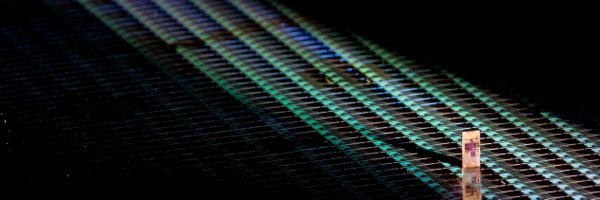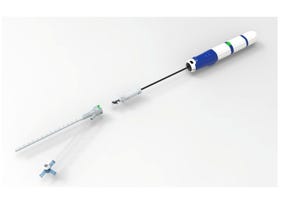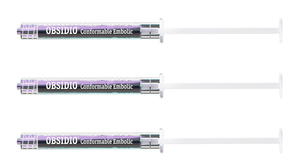May 8, 2015
The ultra high frequency (UHF) radio frequency TegoChip can easily stand up to gamma, eBeam, autoclave, and ethylene oxide sterilization without performance degradation.
Brian Buntz

It turns out that an RF technology originally developed for the aerospace industry is incredibly rugged. Developed by Tego Inc. (Waltham, MA), the technology can survive radiation doses as high as 1000 kilogray (100,000,000 rad). Radiation doses in the range of 2 to 10 gray can be fatal for humans. At the epicenter of the Hiroshima nuclear blast, the amount of radiation dose (kinetic energy released per unit mass) was 100 kilogray. "We haven't found a limit to the memory integrity of our RFID technology. We probably won't," says LaVerne Cerfolio, Tego's director of marketing.
The rugged nature of the battery-less high-memory chip enables RF technology to be leveraged in manufacturing process. Previous RF technology was not able to survive sterilization typically used for medical devices, Cerfolio notes.
"The ability to store data and information inside the chip's rugged memory means you can assure your product's value throughout the supply chain and validate who touched it. You can document when a product has been sterilized or resterilized. The chip also can be connected to the cloud and emails sent for an automatic inventory refresh," Cerfolio explains.
The chips are used to track many products not capable of having an IP address. "When people really talk about the Internet of Things, they are usually talking about things that are connected to the Internet--things that have IP addresses," Cerfolio says. "We are in the next circle--the Internet of Everything. You can connect anything with an RF reader."
Examples of data that can be tracked using the technology include lot number, serial number, data relevant to UDI, and business intelligence metrics.
The RF technology can also be used to document the chain of custody as products are moved from one location to another. "The more people who write to the chip's memory, the more valuable it comes," Cerfolio says.
Third parties can access some or all of the data stored in the chip. "Qualified vendors can see everything but others can only see what they need to see," Cerfolio explains.
"Sterilization companies love this as UHF RF saves processing time and labor; they can get a shipment and do gamma and ship it back out quickly," she says.
It can also be used as a safeguard against counterfeiting. A digital fingerprint can be stored in the chip's rugged memory at time of manufacturing, this is used to prevent cloning of data downstream.
The ability of RF technology to help simplify inventory is catching the attention of healthcare facility officials. "We are finding that hospitals want to have their products tagged."
There is a considerable speed advantage to tracking products in a box with UHF RF rather than bar codes. "When you use bar codes, it is all line of site. You have to read every product from the box individually," Cerfolio says. "With UHF RF, you can read all of the products in the box. You just zap, read, and go."
Drop by Tego's booth (#2049) at MD&M East in New York City, June 9-11, 2015. |
Brian Buntz is the editor-in-chief of MPMN and Qmed. Follow him on Twitter at @brian_buntz.
Like what you're reading? Subscribe to our daily e-newsletter.
About the Author(s)
You May Also Like


